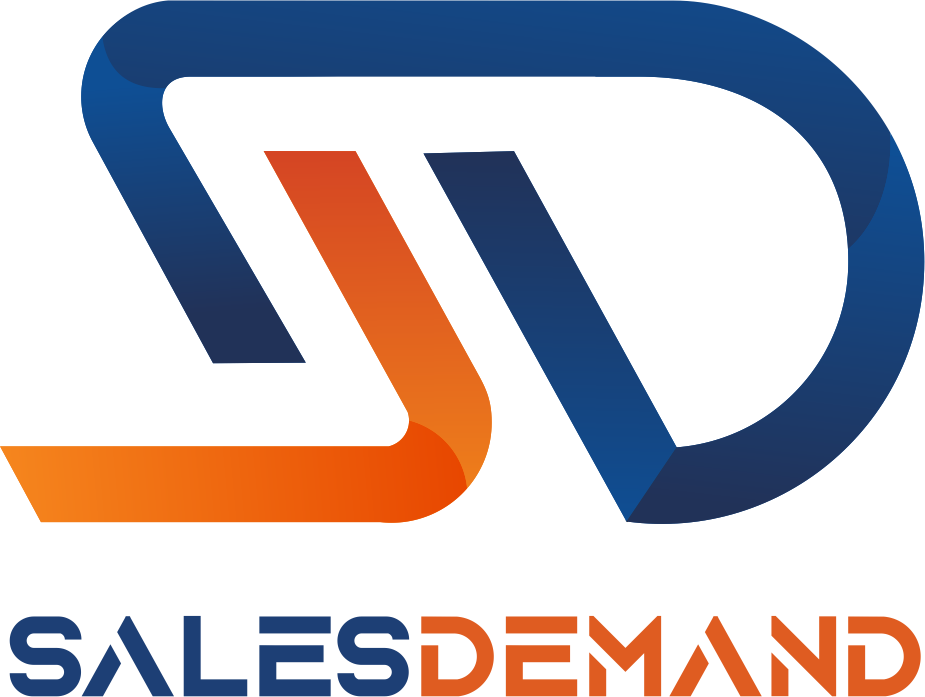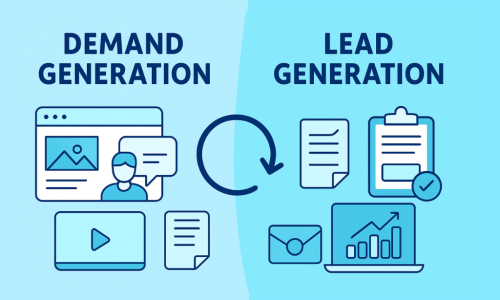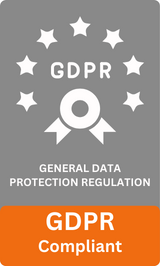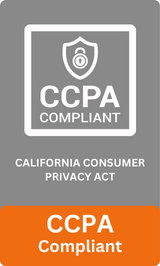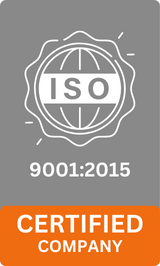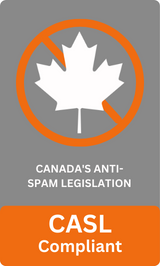
Think of the world’s most successful B2B firms. They don’t just have great products; they have unwavering focus. In today’s hyper-competitive global landscape, particularly for businesses serving diverse markets from Bangalore to Boston, precision is the ultimate competitive advantage. Trying to sell your complex solution to every company that shows slight interest is a fast track to resource drain, misaligned teams, and ultimately, stagnated growth.
The critical tool that separates the market leaders from the laggards is the B2B Ideal Customer Profile (ICP).
The ICP isn’t just an exercise in market segmentation; it’s the single unifying document that ensures your Marketing, Sales, and Product teams are all marching toward the same high-value accounts. It transforms your strategy from broad, expensive outreach into a targeted, high-return operation.
Ready to stop wasting time on low-fit prospects and start building a predictable, high-LTV revenue engine? This guide gives you the step-by-step blueprint to master your ICP and unlock your company’s true growth potential.
Table of Contents
Toggle1. Why Your Business Needs a Laser-Focused ICP
What is an ICP?
An B2B Ideal Customer Profile (ICP) is a detailed, composite description of the type of company that receives the most significant value from your offerings and, consequently, provides the greatest long-term value (LTV) back to your business.
It’s crucial to distinguish this from a Buyer Persona. The ICP focuses on the company’s characteristics (e.g., firmographics, technographics), while the Buyer Persona focuses on the individual’s motivations and role.
| Feature | Ideal Customer Profile (ICP) | Buyer Persona |
|---|---|---|
| Focus | The Company (B2B entity) | The Individual (Decision-Maker/Stakeholder) |
| Data Points | Firmographics, Technographics, Pain Points | Role, Title, Motivations, Challenges, Goals |
| Goal | Defines who to target to maximize LTV. | Defines how to message to convince the individual. |
The Tangible Benefits: Why It’s Non-Negotiable
When you ignore your ICP, you waste effort and budget on low-value leads. Conversely, a clear B2B Ideal Customer Profile (ICP) is the strategic tool that empowers your entire organization:
- Elevated Marketing ROI – Crafting campaigns that resonate deeply with precisely the right companies. This leads to higher engagement, better lead quality, and significantly reduced wasted ad spend.
- Accelerated Sales Cycles – Your sales team stops chasing unqualified leads. Instead, they focus their energy on prospects genuinely poised for conversion, resulting in faster deal closures and more accurate forecasting.
- Fortified Customer Retention & LTV – When you onboard clients who are a perfect fit, they naturally experience greater success with your solution. This translates to higher satisfaction, reduced churn, and a substantial increase in customer lifetime value.
2. Unearthing Your Best Customers: The Data Dive
The journey to defining your ICP begins by looking inward, at your existing client base. Your most successful customers already hold the clues to your future success.
Before you project your ideal, assess your reality. Identify your most successful, profitable, and loyal customers. This isn’t just about who pays the most; it’s about who thrives with your solution and champions your brand.
Key Data Points for Your Analysis:
- Revenue & Profitability – Which accounts generate the highest Annual Contract Value (ACV) and contribute most positively to your net profit?
- Retention & Loyalty – Which clients have demonstrated the longest tenure and consistently renew their contracts?
- Advocacy & Referrals – Who willingly provides testimonials, participates in case studies, or refers to new business?
Tools such as your CRM system, sales reports, and customer analytics platforms are indispensable for gathering this crucial data efficiently.
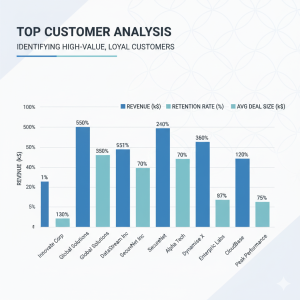
3. Building the Blueprint: Defining Company DNA
Once you’ve isolated your best clients, it’s time to abstract their common characteristics and build the core profile.
Decoding Firmographics: Essential Business Attributes
Firmographics are the organizational DNA, helping you segment the vast B2B market into actionable groups. These are the non-negotiable filters for your lead lists.
Essential Firmographic Attributes:
- Industry/Vertical – What sectors are your top customers in? (e.g., FinTech, E-commerce, Logistics). This is often the most restrictive and important filter.
- Company Size – Defined by Employee Count (e.g., 500-2,000 employees) or Annual Revenue (e.g., $10M – $50M).
- Geographic Location – Are your services optimized for specific regions (e.g., India’s metropolitan clusters, US East Coast) due to regulation or language?
- Growth Stage – Are they rapidly scaling (scale-ups) or mature, established enterprises?
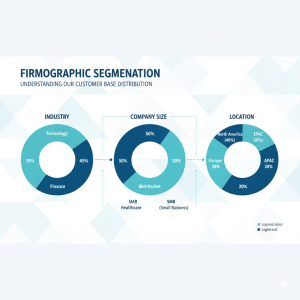
Technographic Insights: Unmasking Their Tech Stack
For any modern B2B solution, especially those involving software, understanding the target company’s current technology landscape is paramount. Technographics reveal compatibility and integration needs.
Key Technographic Indicators:
- Current Software in Use – Do they use a specific CRM (Salesforce, Zoho), ERP (SAP, Oracle), or marketing automation tool (HubSpot, Marketo)?
- Compatibility – Does your product require a mandatory integration that your best customers already have in place?
- Tech Adoption – Are they willing to try new technology, or do they prefer established, legacy systems?
Combining this technical profile with behavioral data is extremely effective for predicting conversion likelihood.
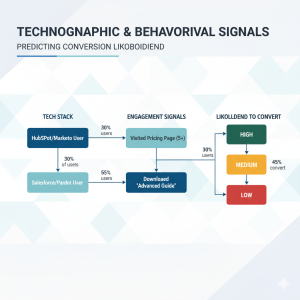
4. Solving Real Problems: Aligning Value & Need
Your ICP should be defined not by what they are, but by the magnitude of the problems they face that your product solves. If the pain is minor, your solution will never be a priority purchase.
Identifying Core Pain Points: Where Does Your Solution Shine?
Focus your research on the costly and complex challenges that necessitate external help. This forms the bedrock of your messaging.
High-Priority Pain Point Categories:
- Operational Inefficiencies – Excessive manual tasks or broken processes costing them time and money.
- Scalability Roadblocks – Infrastructure or systems that cannot handle anticipated growth or demand spikes.
- Regulatory/Compliance Stress – Specific industry requirements (common in FinTech and Healthcare) that your solution mitigates.
Mapping Value Proposition: The Product-Market Fit Matrix
Once you have the pain points, you must visually confirm the alignment with your product’s core features. This verifies your product-market fit within the context of your ideal client.
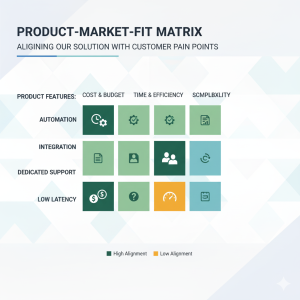
5. Navigating the Decision Maze: Understanding the Buying Unit
In B2B sales, purchasing is rarely a solo endeavor. Your B2B Ideal Customer Profile (ICP) must include a detailed map of the Decision-Making Unit (DMU) within the target company.
Inside the DMU: Who Holds the Keys to Purchase?
You must identify the roles and motivations of the stakeholders involved to ensure your marketing and sales campaigns address all concerns.
- The Economic Buyer (The Signer) – Focused on ROI, budget, and strategic impact. Messaging Focus: Financial gain and risk mitigation.
- The Champion (The End-User/Advocate) – Focused on daily efficiency, ease of use, and professional success. Messaging Focus: Usability and functionality benefits.
- The Influencers (Technical/Security Veto) – Focused on integration, security, compliance, and compatibility. Messaging Focus: Seamless integration and robust security.
Crafting Targeted Messaging for Each Stakeholder
By mapping these roles, you ensure your marketing materials and sales presentations are tailored. For example, a campaign targeting the ICP‘s CIO would focus on security and scalability, while a campaign targeting the Head of Operations would focus on efficiency and automation.
6. Refining Your Focus: Prioritization & Validation
The final stage involves turning raw data into a usable, prioritized system and setting up a mechanism for continuous improvement.
Scoring Your Ideal Client: Building a Robust ICP Scorecard
Not all companies that fit your criteria are equal. A robust scoring system helps your sales team direct their energy toward the “A-Tier” accounts with the highest probability of conversion and LTV.
| Attribute | Weight | Score Value |
|---|---|---|
| Industry Fit | 30% | Perfect Match (10) / Moderate Fit (5) / Poor Fit (0) |
| Employee Count | 25% | Ideal Range (10) / Near Ideal (5) / Out of Range (0) |
| Tech Stack Compatibility | 20% | Critical Integration in Use (10) / No Integration Needed (5) / Incompatible Tech (0) |
| Identified Pain Point Severity | 25% | Severe/Urgent (10) / Moderate (5) / Minor (0) |
The total score (out of 100) dictates the account priority and the resource allocation strategy.
The Iterative Process: Documenting, Implementing, and Optimizing
Your ICP is a living document, not a static report. It must be consolidated into a clear guide for all revenue teams and must be revisited at least quarterly, or after any major market shift or product update.
Crucially, the ICP must be validated against real-world performance. A change in the profile should lead to a measurable, positive change in key business metrics.
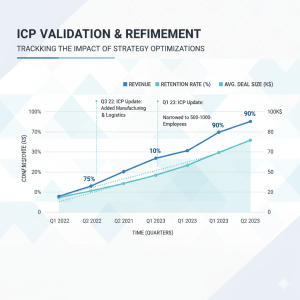
Conclusion
Defining your B2B Ideal Customer Profile (ICP) is the single most important strategic exercise for achieving predictable, scalable growth. It transforms your sales and marketing efforts from an expensive, generalized approach into a focused, high-impact campaign. By moving beyond simple demographics and systematically analyzing firmographic data, technographics, pain points, and profitability, you equip your teams to target the companies that are not just willing to buy, but are destined to succeed with your solution.
In a competitive global market, particularly for companies catering to diverse clients in India and abroad, precision is survival. Invest the time in this blueprint, and watch your business move from guessing games to guaranteed, high-value growth.
I hope you find the above content helpful. For more such informative content, please visit SalesDemand.
FAQs
Q1: What is the main difference between an ICP and a Buyer Persona? A: The ICP describes the ideal company (B2B entity), focusing on attributes like industry and size (firmographics). The Buyer Persona describes the ideal individual within that company, focusing on their role, motivations, and pain points.
Q2: How often should we review and update our B2B Ideal Customer Profile (ICP)? A: You should review and update your ICP at least quarterly. It should also be immediately reviewed after any major product launch, expansion into a new market, or a significant change in competitive landscape.
Q3: Can a B2B company have more than one Ideal Customer Profile (ICP)? A: Yes. If you have distinct product lines or service offerings that solve fundamentally different problems for different market segments (e.g., one solution for enterprise and one for mid-market), you should develop a separate ICP for each.
Q4: Which team is primarily responsible for defining the ICP? A: Defining the ICP is a collaborative effort led by Marketing and Sales leadership, with critical input from the Product team (for product-market fit) and the Customer Success team (for retention and LTV data).
Q5: What are Technographics and why are they important for the ICP? A: Technographics refer to the technology stack and software tools a company uses. They are crucial for the ICP because they determine compatibility, integration needs, and potential upsell opportunities.
Q6: How does having an ICP reduce Customer Acquisition Cost (CAC)? A: By filtering out poor-fit leads early, your sales teams spend less time qualifying, and your marketing budget is directed only towards channels and campaigns that target high-conversion prospects. This efficiency directly lowers your overall CAC.
Q7: Is ICP relevant for services-based businesses, or just software companies? A: The B2B Ideal Customer Profile (ICP) is absolutely relevant for all B2B businesses, including services. For services firms, the ICP helps define the client size, complexity of their problems, and willingness to pay premium rates for specialized expertise.
